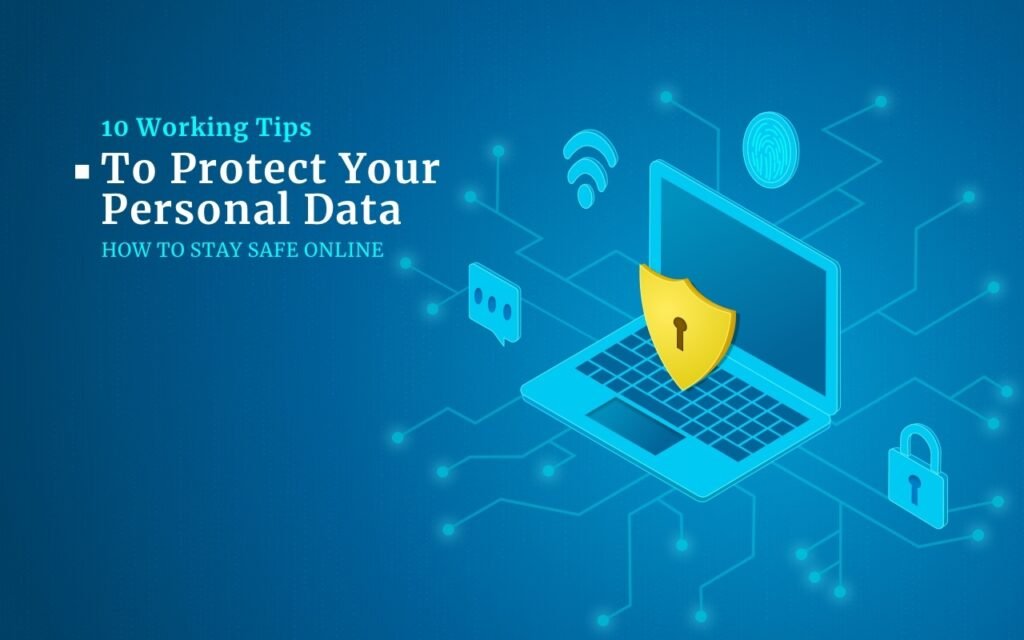
In today’s digital age, protecting personal data online is more crucial than ever. With cyber threats on the rise and data breaches becoming increasingly common, safeguarding your sensitive information is not just an option—it’s a necessity. According to a 2023 study by Cybersecurity Ventures, cybercrime is expected to cost the world $10.5 trillion annually by 2025. This alarming statistic highlights the urgent need for online privacy protection.
But how can you keep your data safe in a world where hackers and scammers are constantly evolving their tactics? In this guide, we’ll explore the best ways to protect your personal data online, answer frequently asked questions, and share actionable tips to keep your digital presence secure.
1. Use Strong, Unique Passwords for Each Account
One of the simplest yet most effective ways to protect your personal data is by using strong, unique passwords. A secure password should:
- Be at least 12–16 characters long
- Include a mix of uppercase and lowercase letters, numbers, and special characters
- Avoid common words, phrases, or easily guessable information
Pro Tip: Use a password manager like LastPass, 1Password, or Bitwarden to store and generate strong passwords without the hassle of remembering them.
2. Enable Two-Factor Authentication (2FA)
Two-Factor Authentication (2FA) adds an extra layer of security by requiring a second form of verification (such as a code sent to your phone or an authentication app) in addition to your password. Many popular platforms, including Google, Facebook, and banking apps, offer 2FA as a security feature.
Why it’s important: Even if hackers obtain your password, they won’t be able to access your account without the second verification step.
3. Be Wary of Phishing Attacks
Phishing scams trick users into revealing personal information by disguising themselves as legitimate sources, such as emails from banks, social media platforms, or online retailers.
How to Spot a Phishing Scam:
- Check the sender’s email address carefully
- Look for grammatical errors and suspicious links
- Avoid clicking on links or downloading attachments from unknown sources
- Contact the company directly if you receive an email requesting sensitive information
Pro Tip: Use email security tools like Google Safe Browsing or antivirus software to detect and block phishing attempts.
4. Keep Software and Devices Updated
Cybercriminals exploit vulnerabilities in outdated software. Regularly updating your operating system, apps, and antivirus software helps patch security flaws that hackers can exploit.
Actionable Steps:
- Enable automatic updates for your operating system
- Regularly update browser extensions and plugins
- Install security patches as soon as they become available
5. Use a VPN for Secure Browsing
A Virtual Private Network (VPN) encrypts your internet connection, protecting your online activity from hackers, advertisers, and even your internet service provider (ISP).
Benefits of Using a VPN:
- Masks your IP address, ensuring anonymity
- Encrypts data, making it unreadable to cybercriminals
- Allows safe browsing on public Wi-Fi networks
Popular VPN services include NordVPN, ExpressVPN, and ProtonVPN.
6. Limit the Information You Share Online
Oversharing on social media can make you an easy target for cybercriminals. Avoid posting sensitive details like your home address, phone number, or travel plans.
Privacy Tips for Social Media:
- Set accounts to private mode
- Avoid sharing location data in real-time
- Be selective about friend requests and followers
7. Regularly Monitor Your Online Accounts
Keep an eye on your financial accounts, email, and social media for any suspicious activity. If you notice unauthorized logins or transactions, take immediate action.
Recommended Tools:
- Google’s “Security Checkup” feature for account monitoring
- Credit monitoring services like Experian or Credit Karma
- Dark web monitoring tools like Have I Been Pwned
8. Secure Your Devices with Strong Authentication
Your devices are gateways to your personal data. Protect them by:
- Using biometric authentication (fingerprint or facial recognition)
- Locking your devices with strong passcodes
- Encrypting sensitive files and folders
9. Be Cautious with Public Wi-Fi Networks
Public Wi-Fi is convenient, but it’s also a hotspot for hackers. If you must use public Wi-Fi, follow these safety measures:
- Avoid logging into banking or sensitive accounts
- Use a VPN to encrypt your connection
- Forget the network after use to prevent automatic reconnection
10. Regularly Backup Important Data
Data loss due to cyberattacks, accidental deletions, or device failures can be devastating. Regularly back up important files to:
- External hard drives
- Cloud storage services like Google Drive or Dropbox
- Secure, encrypted backup solutions
Conclusion
Cyber threats are constantly evolving, but by following these 10 essential steps, you can significantly reduce the risk of personal data breaches. The key is to stay informed, be proactive, and implement strong security measures in your daily online activities. Protecting your personal data is not just about avoiding threats—it’s about taking control of your digital privacy and ensuring peace of mind.





